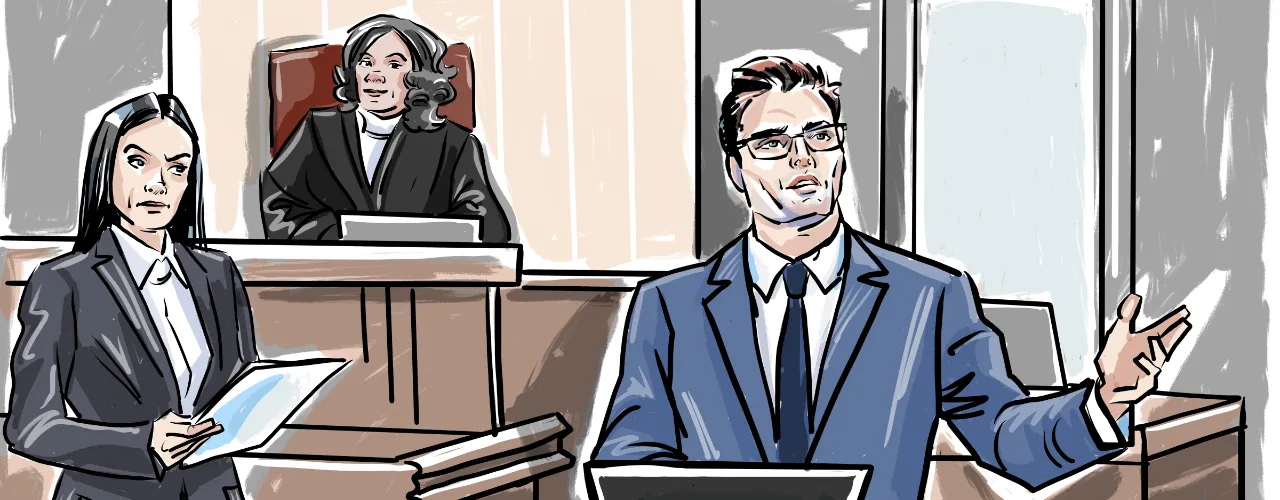
Understanding Stress Leave in Ontario
Stress leave in Ontario is available when an employee experiences severe stress that impacts their ability to work, typically requiring a medical professional’s diagnosis. Employees in Ontario are entitled to stress leave, also known as mental health leave or sick leave, if they are dealing with severe stress, anxiety, or other mental health conditions that disrupt their ability to perform their job duties. If a significant stressor, such as depression, is classified as a “disability,” the employee may be entitled to extended stress leave. Employers in Ontario must comply with the Ontario Human Rights Code (OHRC), which mandates accommodations for employees with disabilities.
This obligation means that employees can be eligible for longer than the usual three-day job-protected absence if they are under significant stress. Employers are required to provide accommodations up to the point of “undue hardship,” even if it poses challenges for the business.
This may involve allowing an employee to take unpaid sick leave for an extended period, exceeding the minimum Employment Standards Act (ESA) regulations or the terms of their employment contract, if necessary for the employee’s recovery from mental health and stress-related conditions.
Can my Employer Deny my Stress Leave?
In the case that an employee has a mental health disorder substantiated by medical documentation, it is unlawful for an employer to deny them stress leave. The employer would be in violation of the employee’s human rights and may be required to pay damages.
Employers are allowed to request basic medical records from their staff in order to prove that they need mental health and stress relief time off. It is not always necessary for this paperwork to be extremely comprehensive or to include information on an employee’s specific diagnosis. The employer is only entitled to the medical information that is deemed reasonably required to accommodate for that employee’s disability at work.

- CP24: Civil Sexual Assault Lawsuit at St. Michael’s in Toronto.
- Global News Morning Show: Sentencing Arguments in Assault case of Dafonte Miller.
- Breakfast Television: Role of Mental Health in Court Proceedings.
- Global News National: Bruce McArthur will not serve consecutive sentences.
- CBC Radio: Interview with Mayor John Tory and Jordan Donich on CBC Radio.
- CTV News National: Handgun ban supported by majority of Canadians: Nanos survey.
- Global News: How difficult is it to get a legal handgun in Canada.
- CP24: Sentencing Hearing for Chair Girl.


How do I Apply for Stress Leave?
To apply for stress leave, start by obtaining a medical certificate from a healthcare provider, such as your doctor. Once you have this certificate, inform your employer, and submit any required paperwork through your Human Resources (HR) department. After you and your healthcare practitioner have decided on the duration of your mental health leave, provide your employer with your doctor’s letter. In this process, you are not requesting authorization but informing your employer that you will be taking a leave of absence under your doctor’s orders.
What are my Rights while on Stress Leave?
While on stress leave, you have the right to take time off without fear of termination or retaliation from your employer. In some cases, you may be eligible for benefits through employment insurance (EI) or your workplace benefits plan. During a prolonged leave of absence, you may not necessarily receive your regular pay. Additionally, your employer is not obligated to maintain your health coverage, though some companies may do so initially, depending on the job. Workers on leave are eligible for employment insurance (EI) benefits, which typically cover about three months’ worth of pay.
Your employer must provide a record of employment if you are a full-time permanent employee or an hourly worker contributing to employee health benefits (check your pay stubs to confirm deductions). Self-employed persons who are registered may also be eligible for EI.
Understanding Workplace Investigations
How is Stress Leave Different from Regular Leave?
In Ontario, stress leave can be taken in addition to the three days of unpaid leave mandated by government regulations. Since employment is protected during stress leave, employees are more likely to take it without fear of losing their jobs. Stress leave differs from regular leave in several ways, including eligibility, duration, purpose, and employee protections.
Stress leave requires medical documentation confirming the need for time off due to work-related stress or mental health issues. It can last from a few days to several months, depending on medical advice. Regular leave, such as vacation or personal days, does not require medical documentation and is often limited by company policy or labour regulations.
Stress leave specifically addresses mental health concerns, allowing employees to recover and seek treatment without job loss fears. Regular leave serves various purposes, like vacation, personal matters, or religious observances, and generally is not intended for health-related issues unless classified as sick leave.
Protections for stress leave under the Ontario Human Rights Code and Employment Standards Act (ESA) include job security and required accommodations for returning employees. Regular leave, while protected under the ESA for vacation and statutory holidays, may not offer the same level of job protection for personal or unpaid leave.
Regarding pay, stress leave is typically unpaid unless covered by an employer’s sick leave policy or short-term disability benefits. Employees may also qualify for Employment Insurance (EI) sickness benefits.
Regular leave usually includes paid vacation days and statutory holidays, with personal or unpaid leave being unpaid unless specified otherwise in the employment agreement. Employees in Ontario are entitled to a minimum of three days of unpaid leave for personal illness, injury, or medical emergency under the ESA. Stress leave can supplement these three days, offering additional protection and flexibility to address mental health needs without job security concerns.
Recent Cases
M.P. v. R.A., 2010 ONCA 384
In this case, the worker filed a lawsuit against her company for the deliberate infliction of mental distress following verbal abuse and harassment from her supervisor. The employee, M.P., claimed that the sustained abusive conduct from her supervisor, R.A., had caused her significant psychological harm.
This case was significant in its examination of the boundaries of employer liability for the intentional infliction of mental suffering in the workplace. The Court clarified the requirements for proving such claims. To succeed in a claim for the deliberate infliction of mental distress, the plaintiff must establish that the defendant’s conduct was “flagrant and outrageous,” that the conduct was intended to cause harm or was reckless as to whether harm would ensue, and that the conduct indeed caused the plaintiff to suffer a visible and verifiable disorder.
While acknowledging the potential validity of claims for deliberate infliction of mental anguish, the Court emphasized the substantial challenges in proving these claims. The court highlighted that the behaviour in question must be extreme and exceed all possible bounds of decency, which sets a high threshold for plaintiffs. The ruling underscored the necessity for clear and convincing evidence that the defendant’s actions were not only intentional or reckless but also directly caused a serious and identifiable psychological injury to the plaintiff.
This case sets a framework for both employees and employers in addressing issues of workplace harassment and the legal ramifications of such conduct. The decision illustrates the Court’s careful balancing of recognizing legitimate claims of workplace abuse while ensuring that the threshold for proving such claims remains firm to prevent frivolous or vexatious lawsuits.
Honda Canada Inc. v. K.K. [2008] 2 S.C.R. 362
After taking a stress leave, K.K., an employee with chronic fatigue syndrome, was terminated by Honda Canada Inc. Afterwards, K.K. filed a lawsuit alleging wrongful termination and sought additional damages for the manner in which he was dismissed, alleging that the employer’s actions caused him undue emotional distress. This case demonstrates important principles regarding the awarding of damages for wrongful dismissal, particularly when emotional suffering is involved.
The Court emphasized that if damages for mental anguish resulting from the dismissal process are predictable and reasonably flow from the breach of the employment contract, they must be compensable. This means that employers must take care in how they handle dismissals, as mistreatment during the process can lead to additional liability for mental distress.
Furthermore, the Supreme Court of Canada clarified the framework for determining the appropriate amount of punitive damages in wrongful dismissal cases that involve emotional suffering. The Court ruled that punitive damages, which are awarded to punish and deter particularly egregious conduct, should be awarded only in exceptional cases where the employer’s behaviour is harsh, vindictive, reprehensible, and an abuse of power. In K.K.’s case, the Court found that Honda’s conduct did not warrant punitive damages because it did not meet the high threshold of being sufficiently malicious or outrageous. This decision had significant implications for employment law in Canada.
It established that while employees could receive compensation for mental anguish or distress caused by the manner of their dismissal, the bar for awarding punitive damages remains high. Employers must ensure they handle dismissals with care and fairness to avoid additional liability for mental anguish. The case also serves as a cautionary tale for employers about the importance of treating employees with respect and dignity, especially during termination processes, to prevent potential legal repercussions.
Hamilton-Wentworth District School Board v. S.F., 2016 ONCA 421
This case involved an employee, S.F., who filed a discrimination claim after being terminated by the Hamilton-Wentworth District School Board due to mental health-related absenteeism.
S.F., who suffered from an anxiety disorder as well as depression, asserted that her dismissal was discriminatory and that the school board had failed to accommodate her mental health conditions. The Ontario Court of Appeal upheld the decision of the Human Rights Tribunal of Ontario, which found in favor of S.F. The Court emphasized the necessity of accommodating employees with mental health disorders and reinforced the obligation of employers to provide a compelling and evidence-based justification for terminations that are claimed to result from undue hardship.
The decision highlighted that the standard for proving undue hardship is stringent and requires employers to demonstrate that accommodating the employee’s mental health needs would cause significant difficulty or expense, beyond mere inconvenience. The Court of Appeal reaffirmed the principles of accommodation, stressing that employers must take proactive measures to manage occupational stress and mental health issues.
This includes creating a supportive work environment, making necessary adjustments to the employee’s job duties or work conditions, and engaging in a meaningful and interactive process to find reasonable accommodations. The ruling shows us that generally speaking, employers are not allowed to dismiss employees based solely on mental health-related absenteeism without first exploring all possible, reasonable accommodations. The Court also noted that employers must document their efforts to accommodate and must be able to show that they have exhausted all reasonable options before concluding that accommodation is not feasible.
This case shows how important it is to implement the duty to accommodate in the workplace. It reinforces the legal and ethical obligations of employers to address mental health issues with sensitivity and diligence, and it ensures that employees are protected from discrimination based on mental health conditions.











